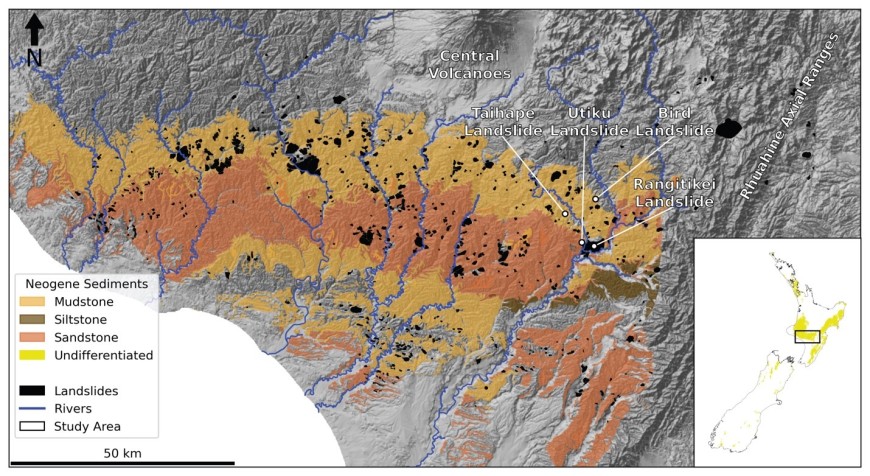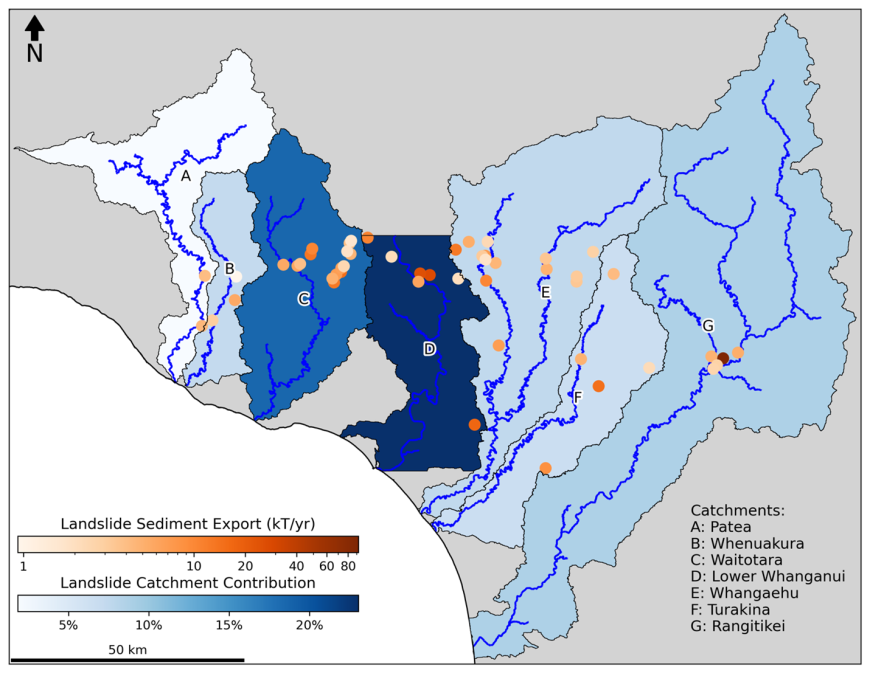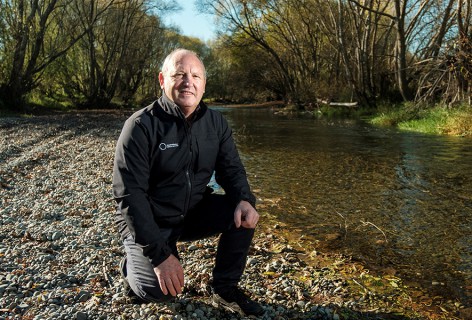- Home
- ...
- Smarter Targeting of Erosion Control (STEC)
- Smarter Targeting of Erosion Control (STEC) News
The sediment contributions of New Zealand’s largest landslides
His research focused on 731 large, slow-moving landslides in the Whanganui Basin, a region in the central North Island that is bounded by the Ruahine Range to the east, the central volcanoes to the north, and Mount Taranaki to the west. Due to the large number of landslides in the region, in-field surveys of all the landslides would have been impractical. As an alternative, Forrest developed a remote-sensing framework that uses techniques such as interferometric synthetic aperture radar (InSAR) and sub-pixel offset tracking (sPOT) to monitor the landslides. His framework enabled him to identify active landslides within the region and estimate their sediment contributions to the region’s rivers.

Figure 1. The Whanganui Basin region of New Zealand. Large, slow-moving landslides mainly occur within the Neogene sedimentary units of the region and cover roughly 8% of the basin’s total surface area. The inset map shows the basin’s location in New Zealand, and some well-known landslides are highlighted in the main portion of the map.
Using InSAR, Forrest has identified activity at 66 of these 731 landslides. While this may seem like a relatively small number, some of the landslides are massive and are known to contribute upwards of 40 kt/yr of sediment to local rivers. Forrest’s analysis has estimated that these landslides contribute 460 ± 88 kt/yr of sediment to the region’s river systems, which is 10 ± 2% of the total sediment export for the region, as predicted by the New Zealand Empirical Erosion Model (NZEEM). This work highlights the important role that large, slow-moving landslides play in this region’s sediment delivery systems and provides evidence that sediment contributions from these features should be included in the sediment budget model being developed for the STEC programme.

Figure 2. The sediment contributions of large, slow-moving landslides within the Whanganui Basin region. The orange dots represent the location of active, large, slow-moving landslides and are shaded based on their annual sediment export. The major catchments of the region are shown in blue and are shaded based on the percentage of the total sediment input that is contributed by large, slow-moving landslides.
Forrest successfully defended his thesis in November 2022 and is grateful for the chance the STEC programme provided for him to work in such a beautiful region of New Zealand. Forrest has since returned to the United States, where he works for the Alaska Satellite Facility (ASF), a NASA science data centre. At ASF, Forrest helps others learn how to use advanced remote-sensing techniques (such as InSAR) and is involved in a variety of global-scale environmental monitoring.
